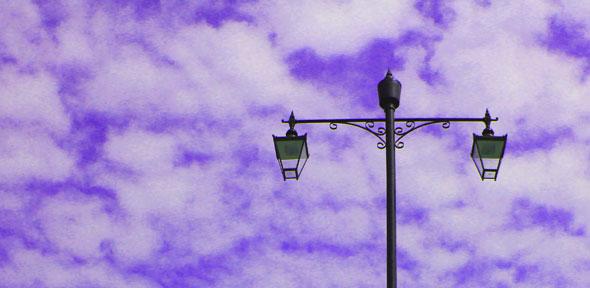
Free public Wi-Fi launched as University expands its network ahead of the Tour de France.
The University of Cambridge has taken this opportunity to invest in free public Wi-Fi because of the value of extending our existing University networks and bringing a lasting legacy for the city.
Jon Holgate, Head of Network, University of Cambridge
The University Wi-Fi network has expanded into the city's public spaces for the first time today as high-speed internet access points have been placed on Parker's Piece and along central streets.
A new map shows the areas where academics, students and staff can now access the eduroam and Lapwing services (see slideshow below where coverage is shaded in red).
The University investment in the network is part of plans to extend its existing education Wi-Fi networks to all Cambridge and Anglia Ruskin University students, staff and visiting academics to cover open spaces.
The University’s existing networks already support up to 25,000 unique visitors each week of which a third are visitors from other universities. Demand for the free Wi-Fi will be monitored over the next 12 months to help plan for future extension of the network.
Jon Holgate, Head of Network, University of Cambridge, said: "We wanted to expand the University network and as part of that we spoke to many people including to students. We often think of Wi-Fi as being something we access from the office, but people kept asking about being able to use their devices outside."
Members of the public will also be able to use the internet while out and about thanks to a free public Wi-FI pilot scheme. The year-long trial of the new Wi-Fi network was launched today (Monday 23 June) by Connecting Cambridgeshire and the University ready for when the Tour de France comes to Cambridge on Monday, 7 July.
People who already use the academic systems eduroam and Lapwing should automatically connect to the network. Last week, before the official launch, almost 50,000 devices connected to the network. The public service is being provided through BskyB-owned The Cloud, which has over 22,000 hotspots across the UK.
Jon added: “The University of Cambridge has taken this opportunity to invest in free public Wi-Fi because of the value of extending our existing University networks and bringing a lasting legacy for the city, which everyone can benefit from. This project represented an excellent opportunity to work closely both with University colleagues as well as local partners across the City to deliver genuinely innovative and leading-edge services to academics and the general public alike.
“We expect thousands of people will use the free Wi-Fi for the Tour de France event which will be a challenge for the network capacity, and the good news is that the service will still be available when the cyclists have moved on.”
Although putting up Wi-Fi points in Cambridge, much of which is a conservation area, was not an easy task, the collaborative efforts of councils, University departments and suppliers made the project work.
On Parker's Piece the city council was putting up a series of lamp posts in the greenspace to make it safer at night. This enabled the University, with the help of its suppliers, and work by the Department of Engineering, to create bespoke housing for the equipment so engineers could place access points and equipment within the lamp posts.
The collaboration between Cambridgeshire County Council, Cambridge City Council and the University to set up the free public access, is the first step in making Wi-Fi technology more widely available as part of Connecting Cambridgeshire’s ambitious programme to improve connectivity across the county.
More than 20 new Wi-Fi access points have been installed on lighting posts, CCTV poles and public buildings at key locations including Parker’s Piece, King’s Parade, the Senate House and the market area. They include the traditional looking lamp posts.
Computer science has a long history at the University and it was recognised early on that a unified computer network was essential. Since the first major cross-city University network (The Granta Backbone Network) was created in 1992, the demands on the more than 45 km of underground system have grown from 150 devices to 130,000 devices in the Colleges, Department and Administration buildings.
University Information Services (UIS) has invested £35,000 in supplying the equipment and resources for the new improvements.
Councillor Steve Count, Leader of Cambridgeshire County Council, which leads the Connecting Cambridgeshire programme, said: “Cambridge has always been at the forefront of new technology and evolving the way we interact with the world. This new free public Wi-Fi service in central Cambridge is a fantastic example of the difference we can make for residents, visitors and students by working together.
“Developing wider public access Wi-Fi and improving mobile coverage is part of the Connecting Cambridgeshire programme’s drive for better connectivity across the county, which is vital in an increasingly digital world. This trial paves the way for improving wireless connectivity across the city and beyond.”
Councillor Lewis Herbert, Leader of Cambridge City Council said: “Cambridge has a global reputation for innovation. We want to enhance this by ensuring we are digitally connected, making sure people can access the Internet on the go.
“This is just the beginning of our plans to expand public access Wi-Fi for the city and beyond, so more people can share the benefits of being connected where-ever they are.”
Users of the free Wi-Fi can connect to the Internet by logging in, or registering, via a shared landing page on The Cloud, which will provide links to useful information and event updates.
Connecting Cambridgeshire is leading the introduction of public access Wi-Fi as part of the Government-funded Super Connected Cities project to improve superfast broadband connectivity and expand wireless technology in Cambridge and surrounding economic areas of South Cambridgeshire.
To view the interactive map of Wi-Fi coverage, which includes statistics on usage, visit https://www.wireless.cam.ac.uk/city/.
